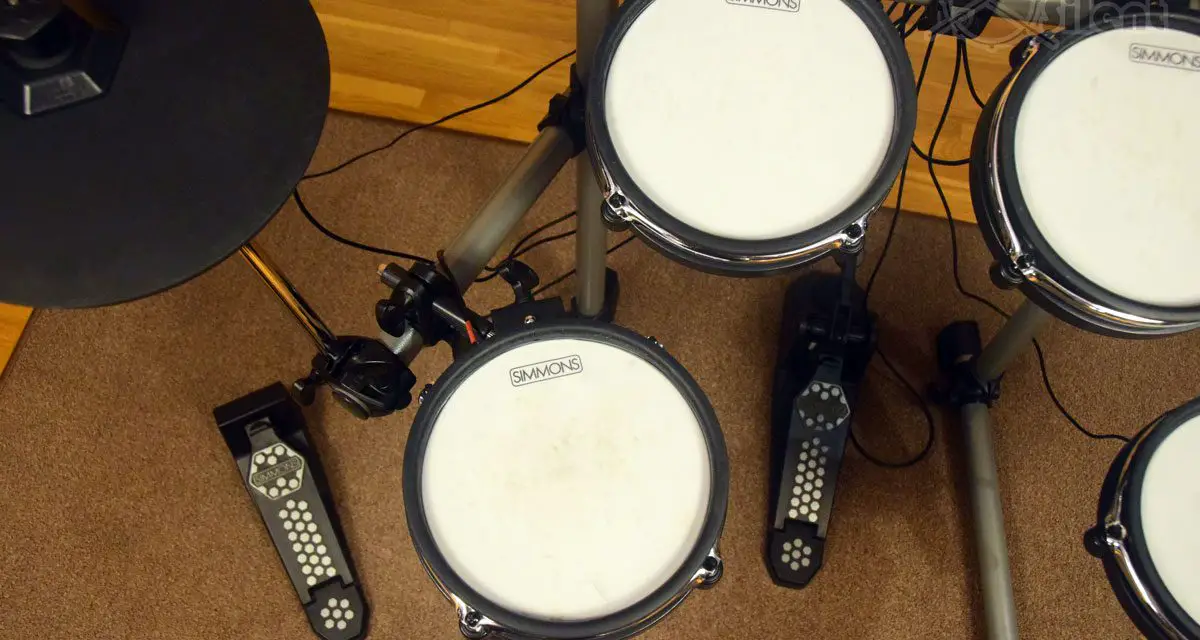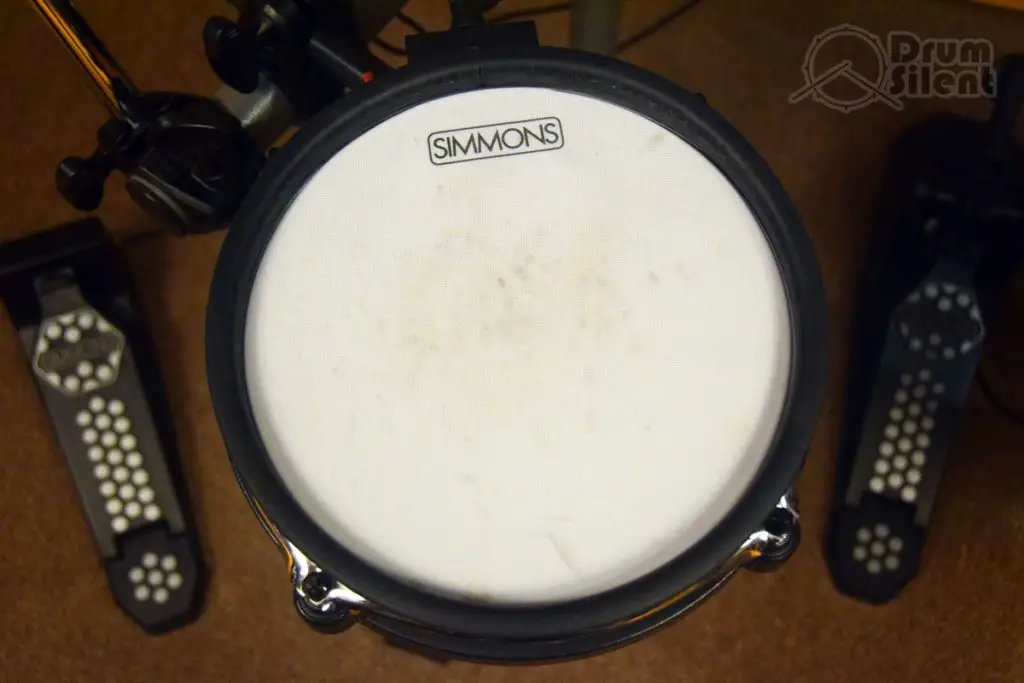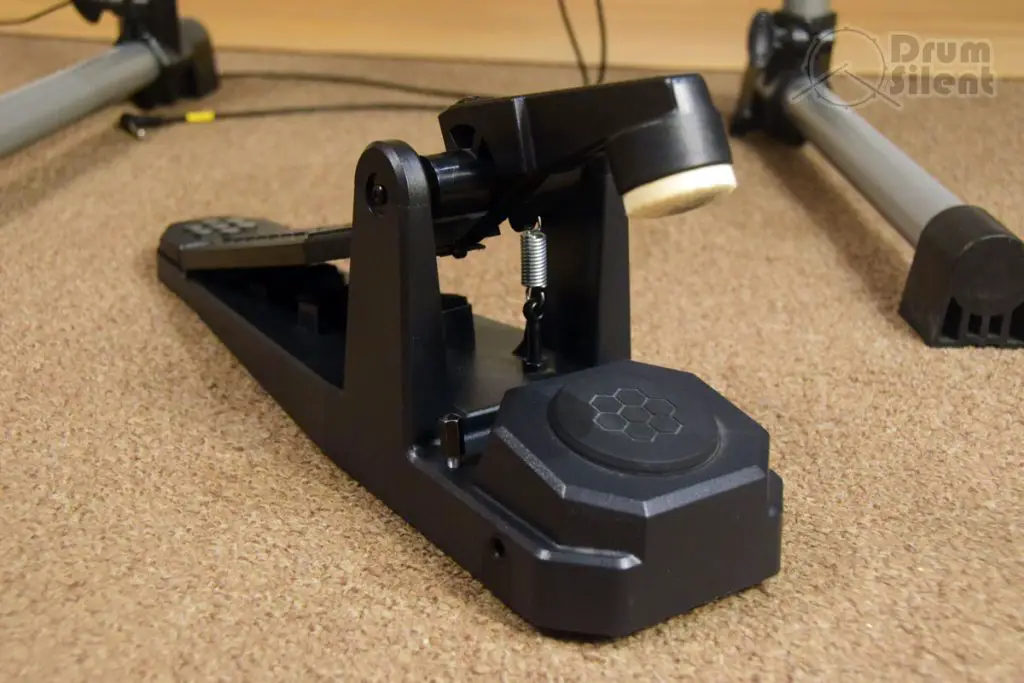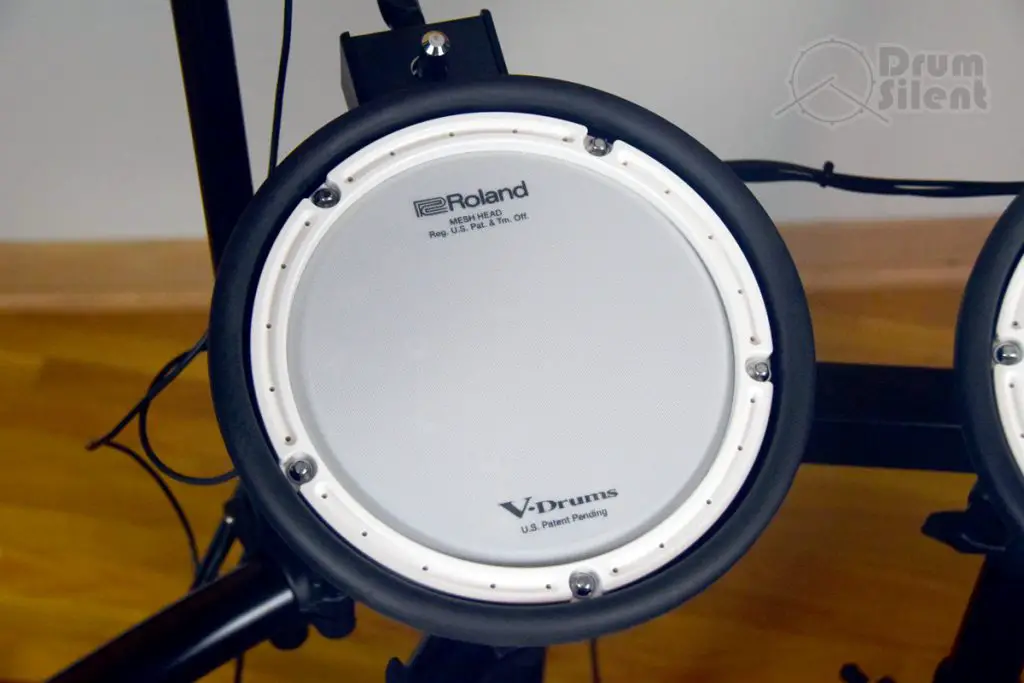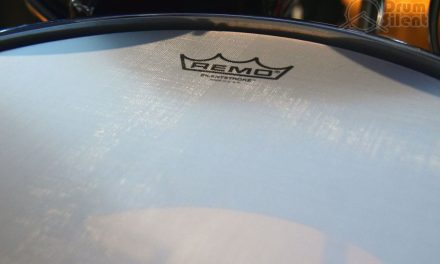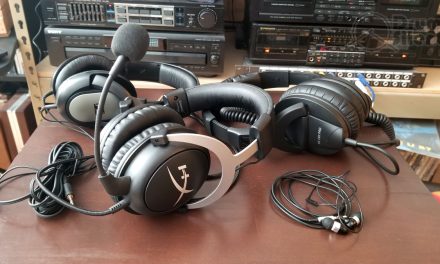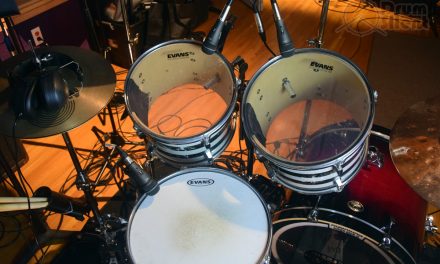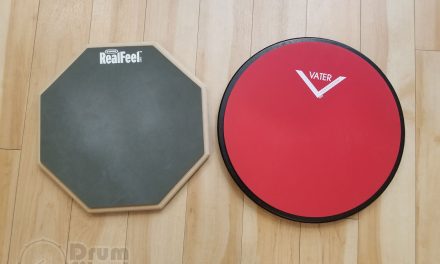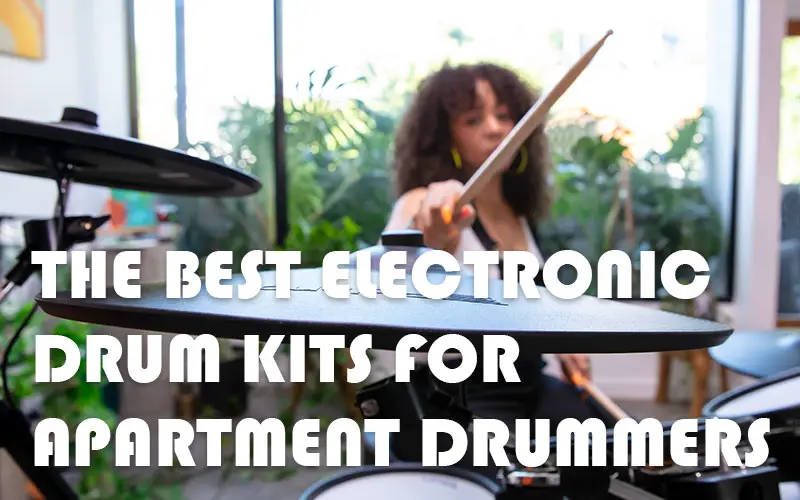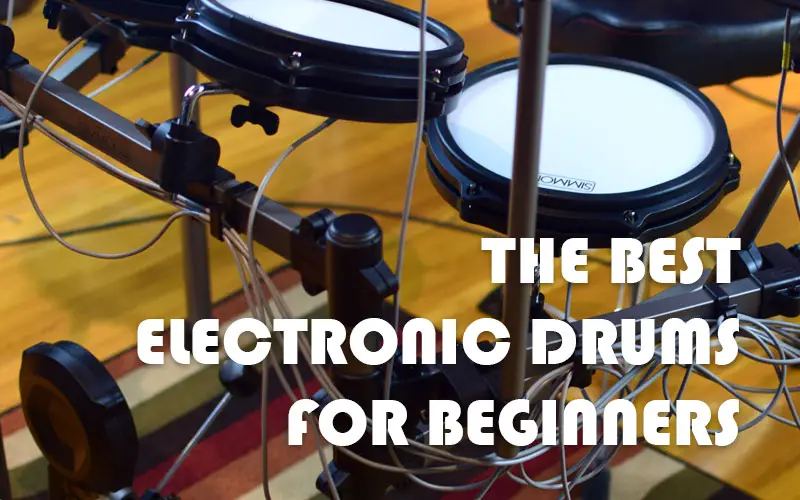Electronic drums aren’t necessarily harder to play, but they have some characteristics that can make them feel both easier or harder to play depending on the type of pads and hardware used around the kit.
Smaller Drum Pads Are Smaller Hit Targets
A standard type of acoustic drum kit might include 10, 12 and 16 inch toms, a 14 inch snare and a 22 inch kick drum. Drums at that size provide a larger sized hit target. While most drummers will attempt to strike the middle of the drum heads, having the extra width can make it a little more forgiving if your sticks aren’t always right on the center of the drum head.
Many electronic drum kits have pads that are smaller than typical drums especially when you’re playing on budget to intermediate level drum kits. It’s not uncommon to have 8 inch tom pads and a 10 inch or even smaller snare pad. This is a few inches smaller in diameter than the typical acoustic drum counterparts. The smaller size of the pads can make for a smaller hit target, and it will be less forgiving if you don’t always strike near the center of the pads.
The cymbal pads on an electronic kit can be the same way. They are typically smaller than their acoustic cymbal counterparts, and smaller hit targets as a result.
So, by having smaller hit targets, you’ll need to have a little better accuracy to keep from accidentally hitting the rims on the drum pads and stuff like that. That can certainly make electronic drums feel harder to play, especially if you’re still working on strike accuracy with the sticks.
However, this isn’t necessarily a bad thing. Learning to hit smaller targets will increase your accuracy overall, and when you move from a kit with smaller drum pads to full size acoustic drums, you’ll find that it can feel much easier to strike different parts of the drum heads more accurately since you’ve honed your accuracy with smaller targets.
The Simmons SD350 has an 8 inch snare pad which can feel like a little too small for a snare
Kick Drum & Hi-Hat Pedal Controllers Can Have a Different Feel
Electronic drum kits that rely on lower budget pedal controllers for the kick drum and hi-hats can sometimes feel harder to play, especially on cheaper budget drum kits.
Hi-hat controllers are a little better in general, but if they don’t provide a quick and natural response they can make it difficult to do faster hi-hat pedal techniques, foot taps and foot splashes. This is usually more of an issue on cheaper drum kits, and not so much on kits that use premium hardware or kits that allow you to use a real hi-hat stand.
Kick pedal controllers can also be a little harder to play on some of the cheaper kits, and it’s most notable if you have foot technique that relies on the feel of a real kick drum pedal with a swinging beater. Kick pedal controllers can lack that feel of a rebounding beater. More experienced drummers will find the cheaper kick pedal controllers harder since they’ll be throwing more intricate foot techniques at it. Beginner drummers might not find it to be harder to play if they’re mostly doing basic footwork and not trying to get too tricky.
Pad Dynamics Can Affect How Easy or Hard It Is To Play
Depending on the sensitivity and velocity curves used on the drum pads, an electronic kit can feel less or more dynamic. Either direction can create issues which can make it a little harder to play. If you set your velocity curves too flat, it can be hard to do quieter parts like ghost notes and rolls. If the sensitivity of the pads is off, it can feel too hard to get a more dynamic sound range out of them.
It’s best to try to set your electronic drum kit to the same sensitivity and curve levels that you might expect from an acoustic kit. This helps you stay used to playing with a more natural dynamic response and then skills you learn on an electronic kit will translate better to an acoustic drum kit.
Different Materials For Pads vs Drum Heads
While the materials used on the pads for an electronic drum kit might not necessarily make them feel harder to play, it can have an effect on translating your skills to acoustic drums. It’s kind of like practicing on a rubber practice pad and then switching over to a snare drum with a mylar head. You can feel the difference in response and rebound with each strike of the drum stick.
Rubber drum pads don’t really feel the same as an acoustic drum head, and some can find that a little harder to deal with if they are used to mylar drum heads. Mesh drum heads feel closer to a mylar head, and this can help them feel a little more natural and easier to play for some drummers.
Rubber cymbal pads also can feel different than a traditional acoustic cymbal. Rubber cymbal pads might sway less, have less flexibility and might also be lacking zones like a bell zone on a ride cymbal, for example. This doesn’t necessarily make rubber cymbal pads harder to play, but it can have a negative effect on dynamic playability if the pad is cheap and lacking zones to help it play like an acoustic cymbal.
Electronic Drums Can Just Feel Different
As we’ve touched on a little bit, electronic drums can just simply feel different. Even with their different feel, it doesn’t necessarily mean they are harder to play. Budget kits will suffer from feeling more different than more expensive kits as a general rule. The budget range is where you are going to encounter smaller pad sizes, less zones on cymbal pads, and potentially wonky hi-hat and kick pedal controllers. For more experienced drummers, they can feel less satisfying to play.
Once you start to get into more advanced electronic kits that have larger mesh drum pads, more responsive cymbal pads, traditional hi-hat stands and your preferred kick drum pedals, the potential playability issues start to disappear.
Enjoy the Challenge
If you do find yourself with an electronic drum kit that feels a little harder to play, maybe due to smaller drum pads or pedals that don’t feel all that great, it can be worthwhile to just look at it as an experience builder for the time being.
I especially feel this way with electronic drum kits with smaller pads. I like the challenge of improving my accuracy so that I can better play the smaller pads.
Learning to play on drums that aren’t always entirely perfect is a good skill to have as a drummer. It can help you get better at dealing with adverse situations and broaden your approach to fit whatever type of kit happens to be sitting in front of you. Being able to play on gear that feels a little wonky in addition to your preferred setup is just going to make it that much easier to play when the kit you have to play on is less than ideal.

